
“Whosoever holds this hammer, if he be worthy, shall possess the power of... THOR!”
That inscription, placed on the side of the God of Thunder’s hammer, has served as a measure of worthiness for decades in the various Marvel universes. In Avengers Endgame, Captain America wielded Mjolnir in the final fight against Thanos. In 1990, Wonder Man used it to defeat the Enchantress. In 1979’s Thor annual, Zeus used the hammer against Thor himself. Before all that though — before even Beta Ray Bill — the first person to pick up Mjolnir in a Marvel comic book, aside from Thor and Odin, was Jane Foster.
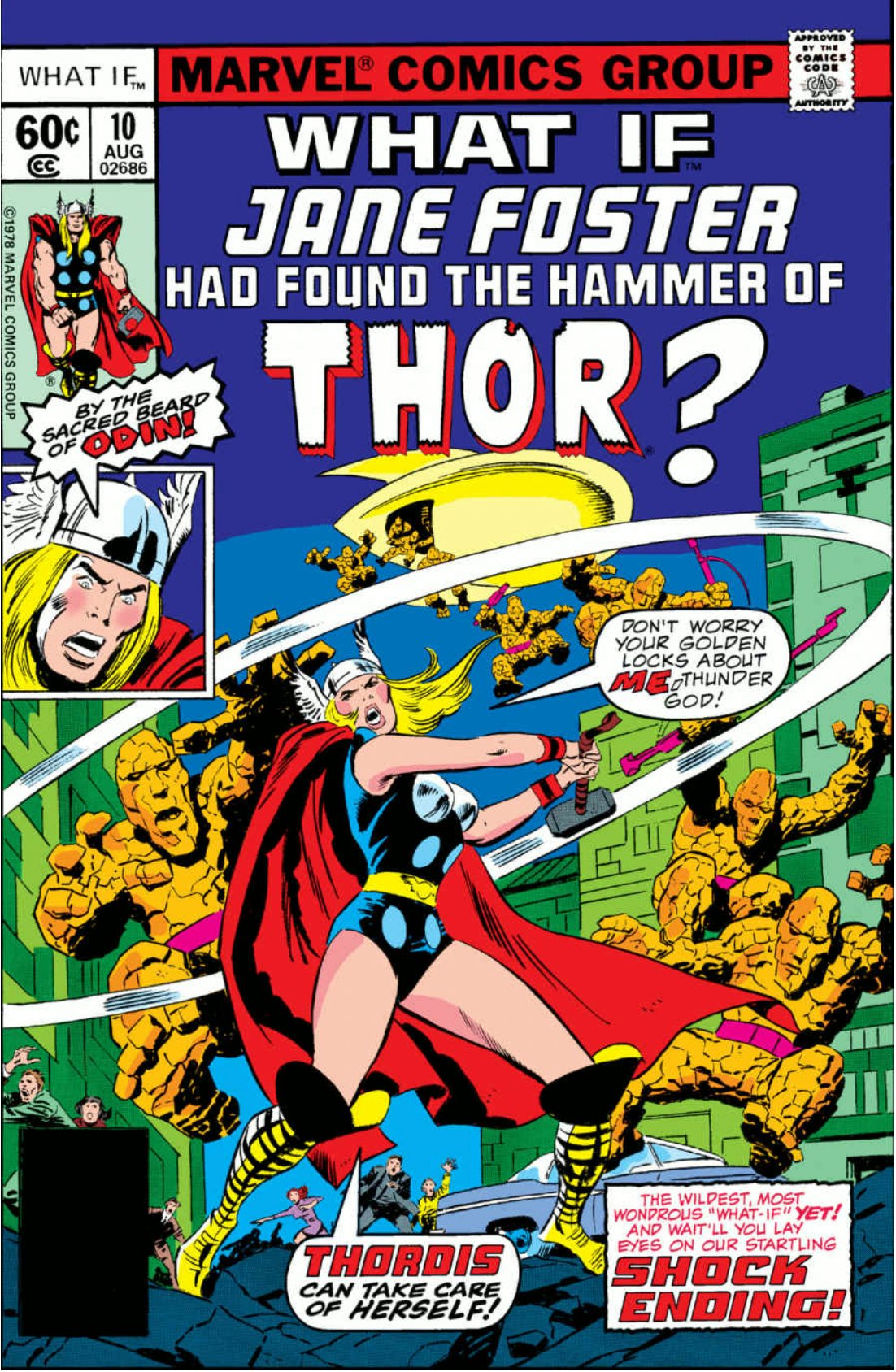
In early 1978, writer Don Glut had been working on the first volume of What If? for several issues, having taken over writing duties from Roy Thomas, who switched to overseeing the book as the editor. At the time, the 10th issue of the series wasn’t something all that special. Much like “What If the Fantastic Four Had Different Super-Powers?”, the premise of Jane picking up Thor’s hammer was built on a whim of an idea that was interesting enough to fill 32 pages. That was about it.
The issue basically retold Thor’s origin story from 1962’s Journey into Mystery #8, where Donald Blake — a seemingly ordinary doctor who is disabled — is vacationing in Europe. After seeing some rock-like aliens from Saturn, Blake hides in a cave where he discovers a stick, picks it up, and becomes Thor, the God of Thunder. (The stick only looked like a stick, it was actually Mjolnir, and don’t worry, Marvel retconned all this to give Thor a more coherent origin story years later.)
In What If? #10, pretty much the same thing happens, but Donald Blake is on vacation with his caretaker, Jane Foster, and she stumbles into the cave, finds the stick (Mjolnir), and becomes Thor. Except, because it’s 1978, she has to effeminize the name, so she chose to call herself the none-too-catchy “Thordis.” From there, the issue portrays Thordis as reliving many of Thor’s greatest hits, but things take a turn when she heads to Asgard.
Furious that this woman has taken his son’s place, Odin banishes her from Asgard in a chauvinistic tirade. Still equipped with the power of Thor, Jane then becomes a hero to the people of Earth but heads back to Asgard when it’s under attack by the monster Mangog. After she defeats Mangog, Odin quickly earns respect for Thordis and rewards her by telling her they are to be married. It’s an awkward ending for a book that was intended to be — and largely delivered on — a story of female empowerment, but, hey, it was 1978.
For decades, nothing more was done with the idea of Jane as Thor until, in 2014, Marvel writer Jason Aaron and artist Russell Dauterman introduced The Mighty Thor, a story where Jane Foster picked up the hammer in the standard, 616 Marvel continuity. Aaron’s story was met with great acclaim and would influence Thor Love and Thunder, but both of those stories owe a debt of gratitude to What If? issue #10 and, here to tell the story of that What If? issue are writer Don Glut, artist Rick Hoberg, and former Marvel editor-in-chief Roy Thomas.
The Viking Issue celebrates the glorious weirdness, diversity, and curious nature of everyone's favorite Scandinavian seafarers.
Assembling the team
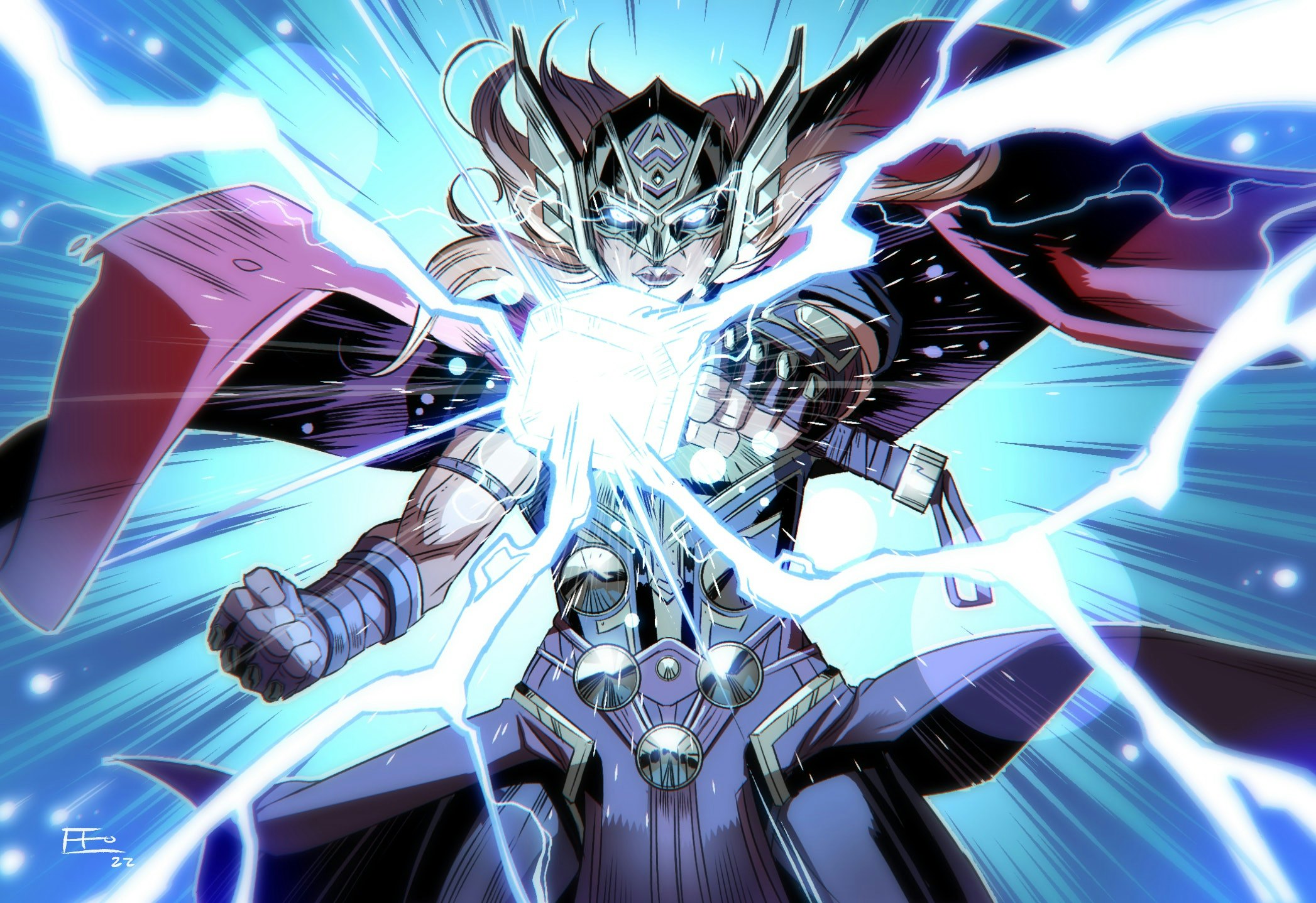
Don Glut: [In 1976], my good friend Roy Thomas — who had been Marvel editor-in-chief after Stan Lee — moved out to the West Coast because he was interested in writing for television and motion pictures. He was still working for Marvel as an editor and writer and Roy was trying to establish a Marvel bullpen out here on the West Coast.
I had been writing for both Warren [comics] and Gold Key [comics] for a number of years, but if it wasn’t Marvel or DC in those days, what you did didn’t matter to people. Roy knew I needed work and needed the credits, so he, very graciously, threw a job my way whenever he had the opportunity.
Rick Hoberg: I had been working for Russ Manning doing Tarzan comics for overseas distribution. It was short-term employment and once I’d finished with him, I got a call from Roy Thomas who told me, “People have talked about you and I’ve seen some of your work. I’m setting up a small group of people here in Los Angeles that I can work with on a regular basis.” I, of course, was interested and Roy gave me some small things to start with and, after a while, I became a regular guy for him.
“Hey! What if Spider-Man had two heads?”
Roy Thomas: When I moved out to Los Angeles, I wanted to find another comic that I could write — besides Conan and The Invaders — that would keep me from having to confer with others about what their characters were up to since they were all in New York. What If? occurred to me as a good way to fill that bill and fill out my schedule. But, a few issues in, now that I'd created it, I decided that I didn't really want to write What If? so I called Don Glut, because Don was looking for work, and I was looking to avoid it.
Glut: I think Roy asked me to do What If? because he knew that I knew the old stories. I was a Marvel fan from the core days when books like Fantastic Four #1 and Amazing Fantasy #15 came out. I knew that continuity and the original What If? books were not that distant from those original stories — we were taking those stories we grew up on and just twisting the history a little bit.
Creating Thordis
Glut: What If? stories were just one-shots and the way they came about was that Roy, Rick, and I used to throw really big, really great parties. At these parties, we used to have these really great piña coladas — I called them “When Worlds Coladas” — and we’d sit around, get a little happy and someone would say something like, “Hey! What if Spider-Man had two heads?”
From conversations like that, Rick and I were talking at one party, and one of us — I think it was me — came up with the idea of, “What if Donald Blake didn’t find the hammer of Thor? What if it was Jane Foster?” That sparked off a whole line of story ideas, so we went and found Roy and said, “What if Thor was a woman? He’s already got the long hair and we could have Jane Foster find the hammer instead of Don Blake.” And Roy said, “That’s a good idea, go with it!”
“The fans never liked it — they thought it was a silly name.”
At that same party, Rick and I were trying to come up with a way to feminize the name Thor. I think Rick came up with the name “Thordis” — I don’t know where that came from.
Hoberg: I think it was Don who came up with the name “Thordis.” I’ve heard him mention to people that it was a real Scandinavian name, which I think it is. Regardless, we’ve always had to defend that name. The fans never liked it — they thought it was a silly name. I’ve had many fans come up to me over the years and ask, “Why’d you have to name her Thordis?!” I know Don’s had that happen too.
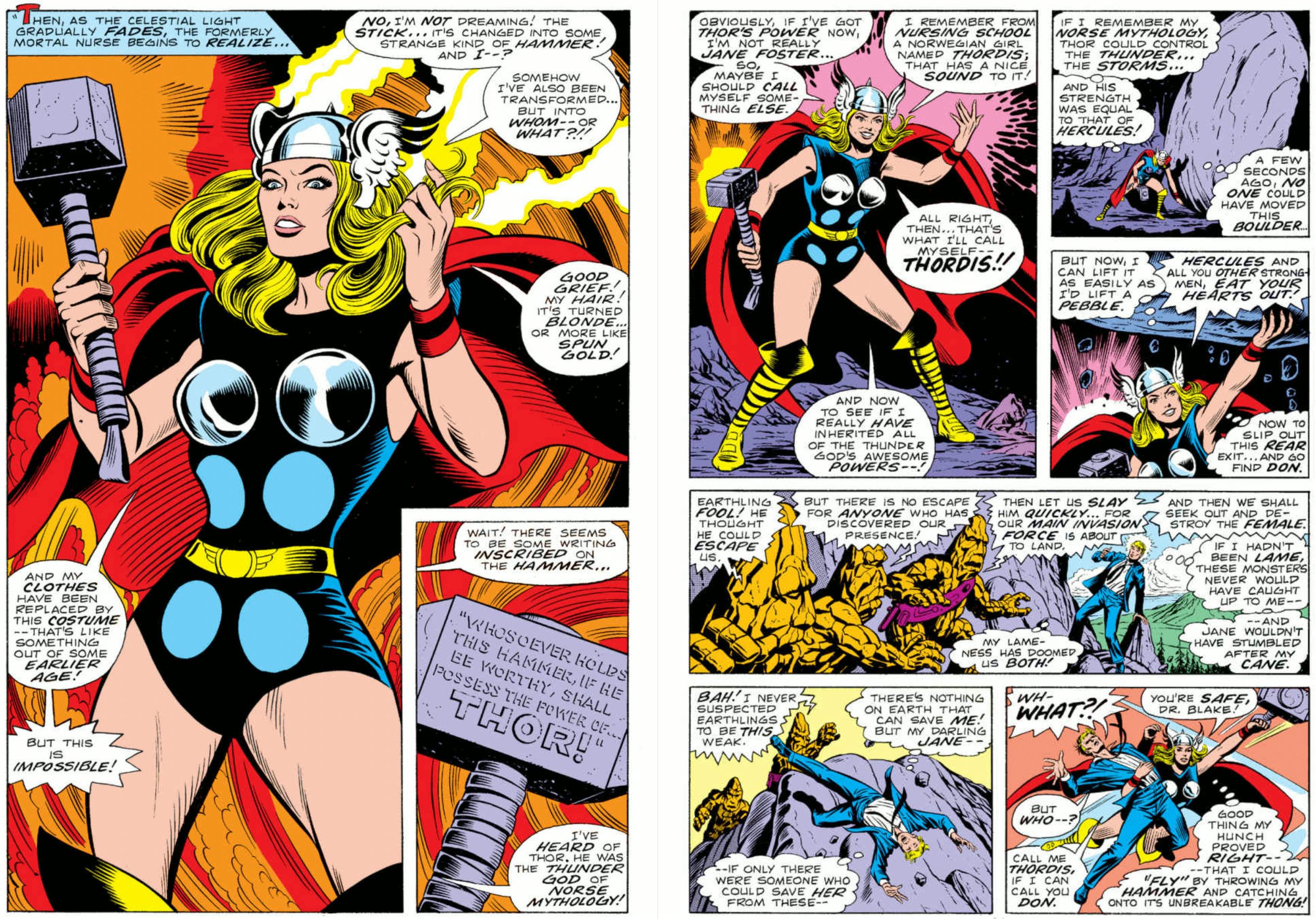
Glut: At a comic convention four or five years ago, a woman was dressed as a female Thor. I walked up to her and said “I co-created that character.” But, she seemed to take offense to what Rick and I had done, including the name “Thordis!” I can’t remember what her objections were, but I just went back to my table and that was it.
By the way, I think a couple of the other names we came up with — and wisely discarded — were Thorina and Thorette.
Hoberg: Oh yeah, those names definitely would have been worse. They would have made her sound like a Barbie doll, but we wanted her to be Thor. We wanted her to be a real woman and for her to be enjoying this role. She was a character who thought it was about time for a woman to hold the hammer of Thor. This was also the time of women’s liberation and it was interesting to have a woman become the mightiest character on the Avengers. Women’s lib was a big reason why we wanted to do this book in the first place.
“We got away with a lot more back then.”
Glut: When it came to designing the character, we wanted to keep the basic Thor costume. But, like the sexists we all were back then, we thought she should have bare legs like Supergirl and Mary Marvel. Other than that, I don’t think there was anything else we really did to change it, other than the breastplates.
Hoberg: I just wanted to give her Thor’s traditional suit and it immediately came to me that all I had to do was change those top two circles into breastplates and that's what I did.
Glut: We got away with a lot more back then.

Telling The Story
Glut: When we got started, I got out the old comic books for reference. I always tried to make these stories as close to the original storylines as possible because that’s what I wanted to read and I think that’s what the fans wanted. I wanted to hit all the story beats that people remembered from Thor comics, but changed around for this story. Sometimes it was challenging, but it was always fun.
Hoberg: We were working in the Marvel Method back then, which I just loved. Don would hand me a story breakdown that was a paragraph or two per page and usually every sentence represented a panel. It was very collaborative and liberating for an artist. Roy helped too, of course, because he was always full of ideas. The script came after the panels and I really liked telling stories that way because I’ve worked with full scripts, and they tend to hamstring you when it comes to comics.
This issue was really important to me because I had done a couple of issues of What If? prior to this one, but I thought they were only OK. I felt I really needed to up my game with this issue and show them something I could really do well and this was perfect for me because I was a huge Jack Kirby fan. I loved the costuming he did, particularly on Odin, whose costumes were always so wild. Jack never used the same costume twice on that character! Those designs, I look at them now and say, “You know, Odin had to be superpowered to wear that damn thing on his head.”
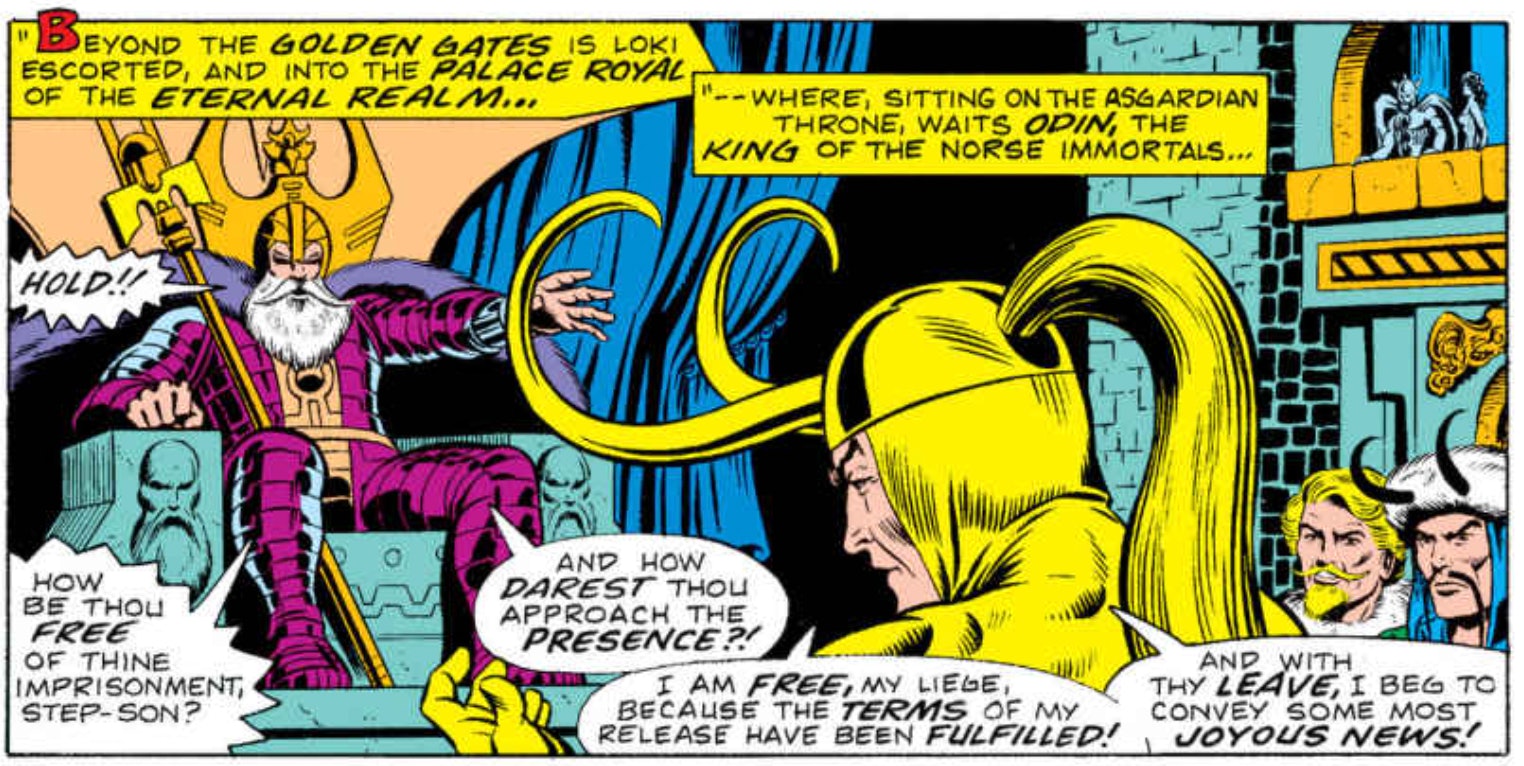
Hoberg: This issue ended up being a lot of fun for me because I got to dive into so many of the great characters from Thor. I love doing the splash pages. Loki is a favorite of mine, and he’s all over this issue. I got to draw Mangog and the rock monsters from Saturn and also Balder, who is another favorite. This issue, I thought, gave me my first real opportunity to shine as a comic book illustrator.
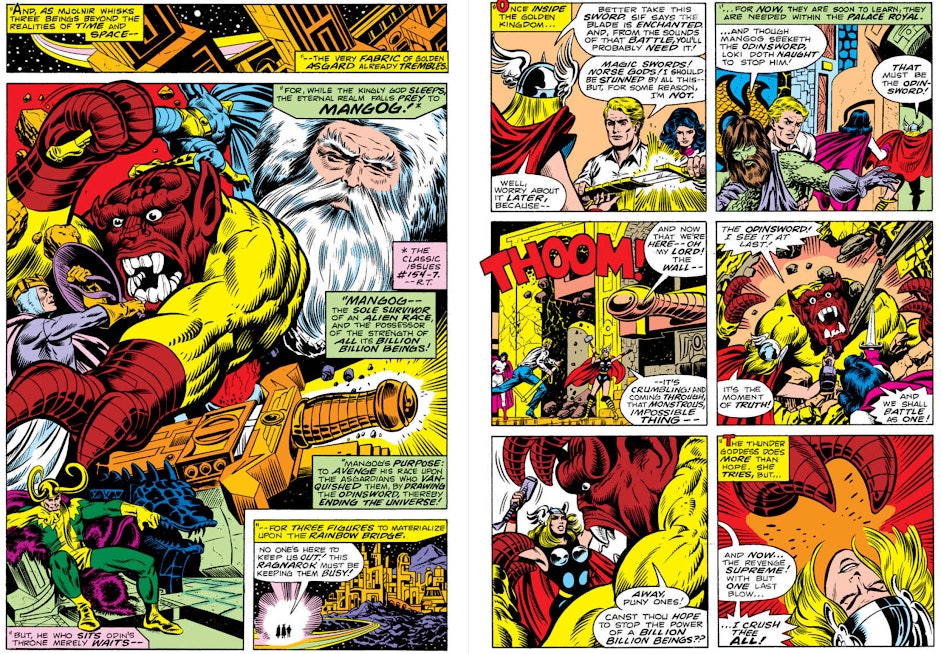
The Mighty Thor
Glut: We never saw this issue as anything more than a one-shot that people would read and probably forget about. I never dreamed there’d be a big-budget movie decades later and that there’d be all this merchandise with Jane Foster as Thor. I’m even amazed that they’d bring the character into the mainstream Marvel comics storyline! That never entered my mind. It’s astonishing to see all of this and I’m really honored that Rick and I have been getting some more recognition for working on that issue of What If? so many years ago.
I really had fun on What If? Don and Roy and I really became good friends and it was a great time. I also love what they’ve done with this new version of the character. Calling her “The Mighty Thor” is very cool and I love Russell Dauterman’s artwork for her. I remember how exciting it was for me [in 2019] when I was at home watching Comic Con coverage on my computer and they announced that Natalie Portman is going to be the female Thor. I said to myself, “She’s going to be Thordis!” Thankfully, though, they aren’t calling her that.







